Computer Vision Market Size
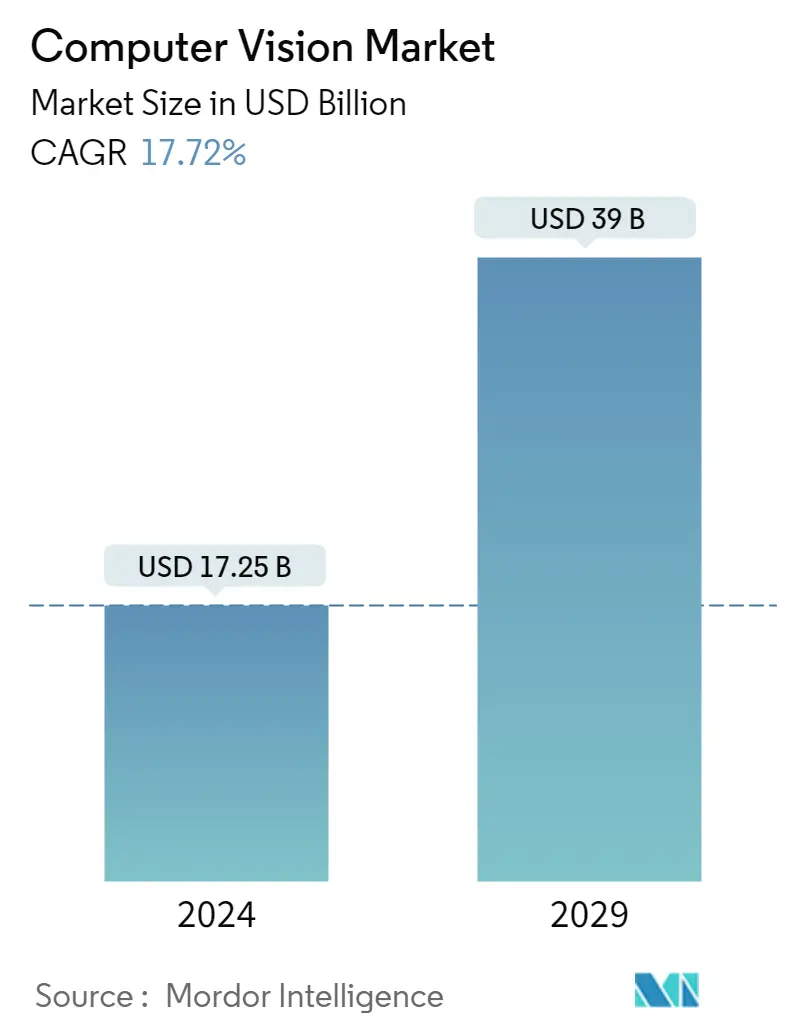
| Study Period | 2019 - 2029 |
| Market Size (2024) | USD 17.25 Billion |
| Market Size (2029) | USD 39.00 Billion |
| CAGR (2024 - 2029) | 17.72 % |
| Fastest Growing Market | Asia Pacific |
| Largest Market | North America |
Major Players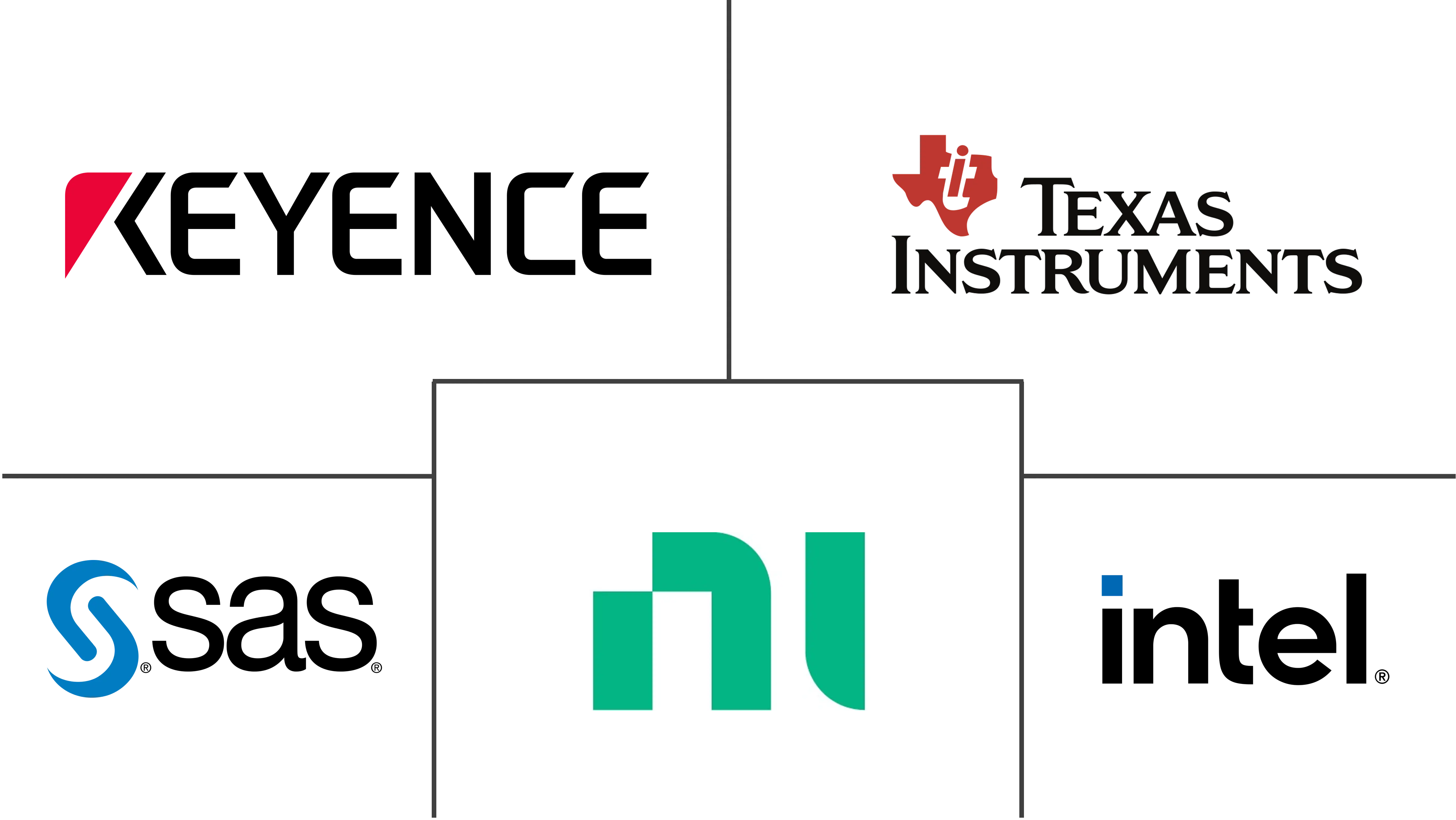
*Disclaimer: Major Players sorted in no particular order |
Computer Vision Market Analysis
The Computer Vision Market size is estimated at USD 17.25 billion in 2024, and is expected to reach USD 39 billion by 2029, growing at a CAGR of 17.72% during the forecast period (2024-2029).
With the help of digital cameras or videos and applying deep machine learning algorithms, computer vision accurately identifies any defect in the system, thus, making it one of the critical components in predictive maintenance.
- AI in computer vision technology is becoming increasingly popular in various use cases, including computer vision solutions in consumer drones and autonomous & semi-autonomous cars. Due to recent advancements in image sensors, sophisticated cameras, and deep learning techniques, the application of computer vision systems has increased in many sectors, including education, healthcare, robotics, consumer electronics, retail, manufacturing, and security & surveillance.
- Computer vision systems use facial recognition and biometric scanning to increase the protection of valuable assets. Due to computer vision systems' ability to distinguish various patterns in human retinas and irises, smartphone security is the most common application for facial recognition technology.
- Additionally, more sophisticated applications of facial recognition include commercial or home security systems that confirm identity using the physiological characteristics of the subject. High-security locations like bank vaults and research labs are also subject to fingerprint analysis for access control.
- For instance, in August 2022, TachyHealth, Inc., a Dubai-based developer of artificial intelligence solutions for hospitals and medical facilities, partnered with Medical Refill, a company that offers patients remote medical consultations. The alliance intends to give the clinical team access to technological solutions, including computer vision and artificial intelligence.
- Additionally, according to the WHO, 1.25 million individuals pass away each year as a result of traffic accidents. Furthermore, according to the WHO, by 2030, this trend will overtake heart disease as the seventh biggest cause of death. The majority of traffic collisions can be linked to Vulnerable Road Users (VRUs), such as cyclists and pedestrians. Thus, it may be inferred that human mistake is to blame for the majority of traffic accidents. Consequently, a new technology that is pushing the market for computer vision is driverless vehicles.
- However, the complexity of integrating computer vision systems and the growing security issues surrounding cloud-based image processing are some of the key challenges that are limiting the market's expansion. Additionally, the market's growth is primarily being constrained by the high demand for highly qualified and experienced professionals, as well as worries about the privacy and security of user data.
Computer Vision Market Trends
This section covers the major market trends shaping the Computer Vision Market according to our research experts:
Manufacturing Sector is Expected to Register a Significant Growth
- Robotics and automation are being used most heavily in the manufacturing sector. There is an increasing need for more intelligent systems to monitor industrial processes and outcomes as manufacturing facilities move toward completely automated manufacturing. Machine vision, a branch of computer vision, is further assisting in improving industrial operations as the IoT is transforming the manufacturing sector and making them more autonomous.
- Additionally, manufacturers can use computer vision to provide predictive maintenance for remote site inspections of rigs, pipelines, facilities, and fields. With the aid of computer vision, packaging and product quality are closely monitored, and the number of defective products is also decreased.
- For instance, cloud computing platform company Amazon Web Services, Inc. recently introduced Amazon Lookout, a vision service for checking products while they are being manufactured. Amazon Lookout aims to make computer vision models more accessible to many manufacturing facilities by removing barriers to building, optimizing computer vision models, training, monitoring, and deploying. It would also support its customers' deployment of computer vision into its operating systems inside of their facilities.
- Additionally, every product in the production line can have its inspection automated thanks to computer vision and deep learning algorithms. For instance, in January 2022, Drishti Technologies, Inc., an AI-driven video traceability and video analytics provider, will automate the analysis of floor video recordings from production units using computer vision and deep learning. In essence, the company has installed cameras on manufacturing lines to record videos, which are afterwards analysed using action recognition, anomaly detection, and object detection.
- Over the projected period, it is anticipated that the predictive maintenance segment will expand. To monitor the data of the machinery and associated components, predictive maintenance blends machine learning algorithms with IoT (Internet of Things) devices. Thus, it is anticipated that the region's market would also be driven by the increased adoption of digital technology and the preference for predictive maintenance that is more relevant to their industry.
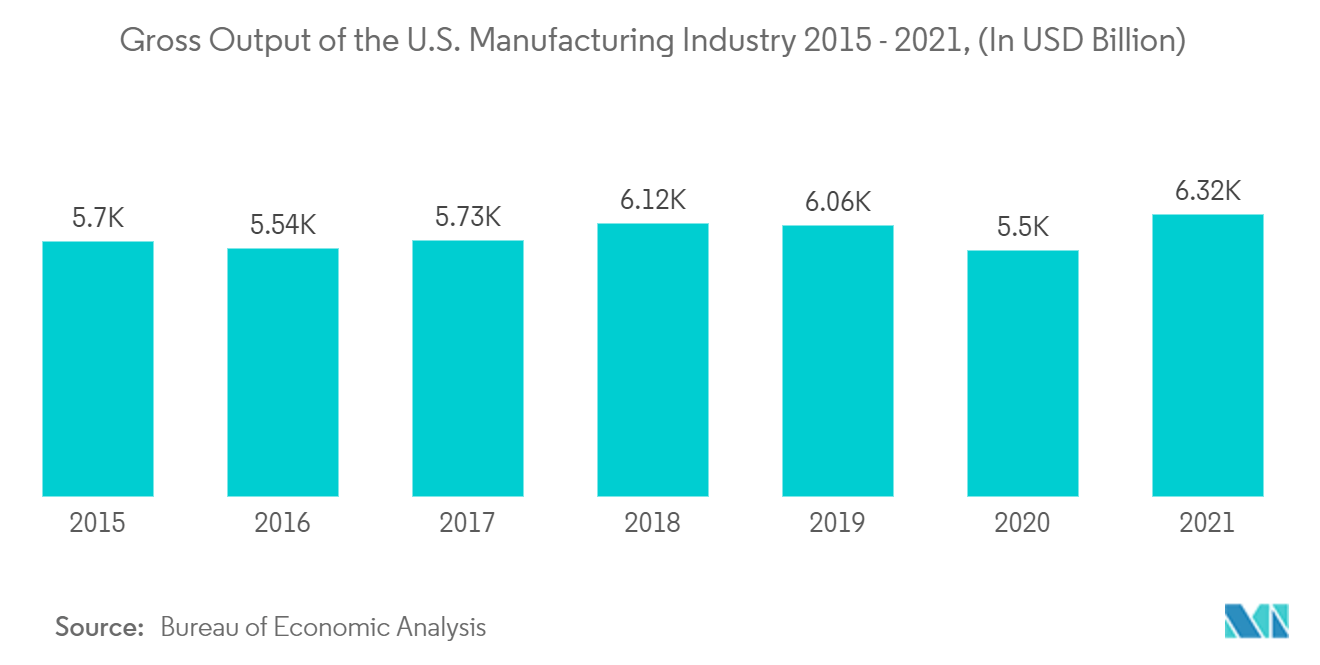
Asia-Pacific to Witness the Significant Growth
- One of the economies with the fastest growth rates in the world, including China and India, is found in the Asia-Pacific area. China is the global leader in manufacturing items like consumer goods or other electronic goods. Since computer vision has numerous applications in the manufacturing sector, the "Made in China 2025" aim is one of the key factors promoting market growth in the area.
- Chinese experts developed an ML-driven system to interpret CT scans and patient clinical data. The researchers made an unexpected finding when they compared the system's performance to that of a Chinese expert. The combined model successfully identified COVID-19 infection in over 70% of patients with CT scans judged to be normal by medical professionals. The survey above also discovered that deep learning and computer vision technologies help recognize complex patterns that are invisible to the human eye.
- Additionally, India's healthcare industry is expanding rapidly due to increased government initiatives. To promote India's emergence as a center of medical tourism, the government has put in place a number of measures. As a result, it increases the potential for substantial capital investments in cutting-edge diagnostic facilities, boosting the uptake and demand for computer vision technologies.
- Additionally, by providing a variety of networking architectures, high-performance hardware components have simplified the installation of vision systems and serve a wide range of diverse applications. For instance, in August 2022, the provider of computer vision technology VisualCortex Pty Ltd, joined forces with the supplier of security surveillance for public safety, i-PRO, to make it easier to install enterprise-wide video analytics systems from beginning to finish in the Asia-Pacific area.
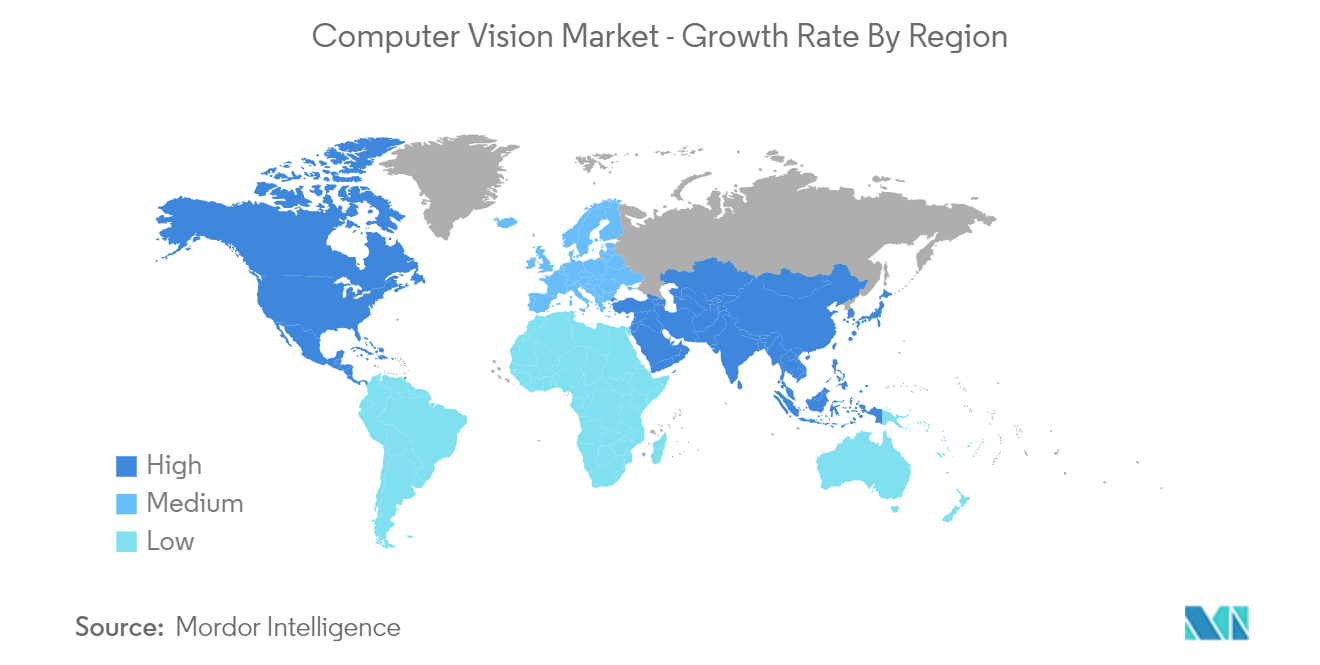
Computer Vision Industry Overview
In the computer vision technology market, the competition among the players is moderately increasing. Recent advancements in technologies such as facial recognition, gesture analysis, and enhanced security are revolutionizing different industries such as manufacturing, healthcare, etc. Therefore, different companies are entering the market. Some key players are Intel Corporation, National Instruments Corporation, Keyence Corporation, Texas Instruments Incorporated, and SAS Institute. Some of the developments are:
In August 2022, Vedanta Limited teamed with Detect Technologies, an organization based on industrial artificial intelligence that creates cutting-edge technology. The alliance aims to roll out T-pulse, Detect Technologies' AI-based office software. The COVID-19 compliance module of the T-pulse software will assist Vedanta Limited in ensuring that its workspaces meet all necessary requirements and uphold the highest sanitization standards. T-computer Pulse's vision technology would also improve the digital safety monitoring system.
In March 2022, the AI computer vision platform Cogniac and the American technology company Cisco Systems Inc. (Cisco Meraki) recently established a cooperation. The cooperation would enable the integration of Cogniac's computer vision capabilities with MV smart cameras from Cisco Systems Inc. and cloud-based platforms. Both organizations would create machine learning models that make use of picture and video data to track the actions without the requirement for new infrastructure or AI expertise.
Computer Vision Market Leaders
-
Intel Corporation
-
National Instruments Corporation
-
SAS Institute
-
Keyence Corporation
-
Texas Instruments Incorporated
*Disclaimer: Major Players sorted in no particular order
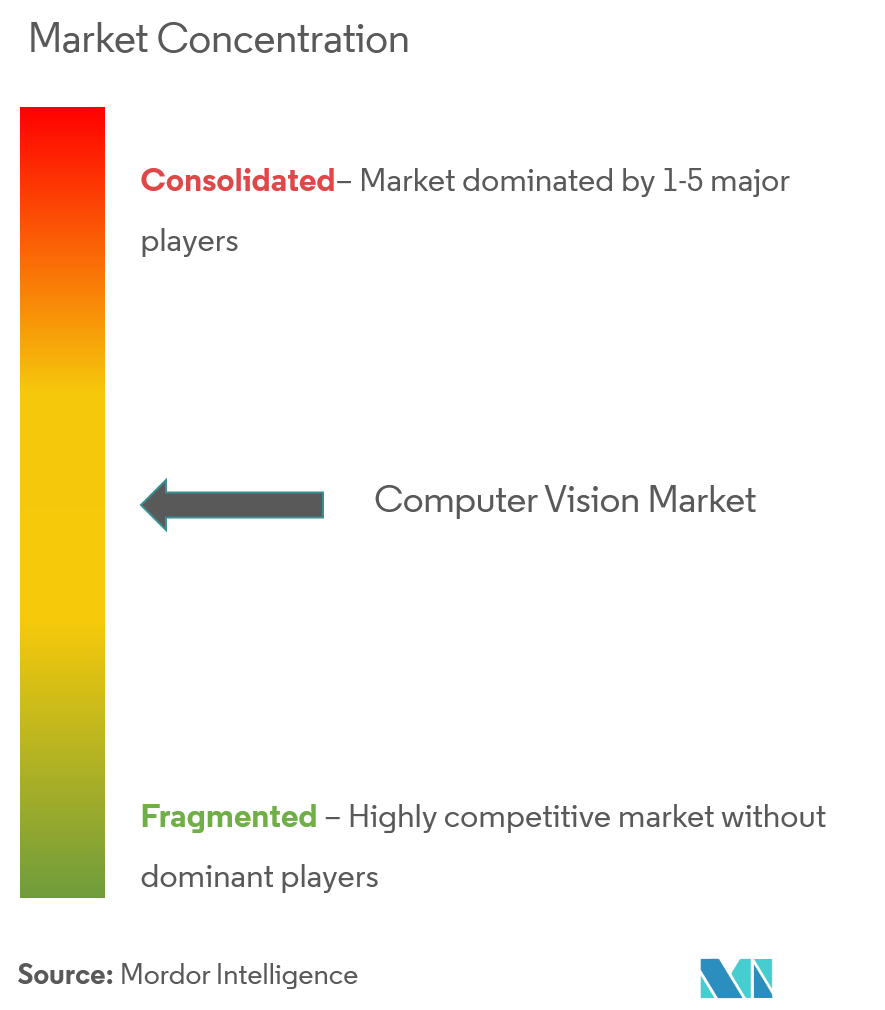
Computer Vision Market News
- June 2022 - Image signal processor (ISP) software vendor Visionary.ai joined forces with LiDAR sensor producer Innoviz Technologies Ltd. To enhance the performance of 3D computer vision for various applications, including drones, robots, and smart cities, the alliance seeks to offer a combined service of ISP software and LiDAR sensors.
- March 2022 - Intel Corporation, a U.S.-based provider of cloud computing, data center, IoT technologies, computer vision, machine learning, and predictive analytics, announced that its solutions are transforming patient rooms and critical care environments in the healthcare sector. These solutions provide advantages such as improved patient outcomes, increased operational effectiveness, and less exposure that could harm patients and medical employees.
- January 2022 - Amazon Web Services, Inc., a cloud computing platform provider, has released AWS Panorama in Asia Pacific, a software development kit that uses computer vision to optimize operations. Investing in AWS Panorama, which will be accessible in Sydney and Singapore, will assist businesses in automating visual inspection duties such as finding bottlenecks in industrial processes, evaluating manufacturing quality, and determining worker safety within their facilities.
Computer Vision Market Report - Table of Contents
1. INTRODUCTION
- 1.1 Study Deliverables
- 1.2 Study Assumptions
- 1.3 Scope of the Study
2. RESEARCH METHODOLOGY
3. EXECUTIVE SUMMARY
4. MARKET DYNAMICS
- 4.1 Market Overview
- 4.2 Introduction to Market Drivers and Restraints
-
4.3 Market Drivers
- 4.3.1 Increasing Need for Quality Inspection and Automation
- 4.3.2 Growing Demand for Vision-Guided Robotic Systems
-
4.4 Market Restraints
- 4.4.1 Complexity in Integrating Computer Vision Systems
- 4.5 Industry Value Chain Analysis
-
4.6 Industry Attractiveness - Porter's Five Forces Analysis
- 4.6.1 Threat of New Entrants
- 4.6.2 Bargaining Power of Buyers/Consumers
- 4.6.3 Bargaining Power of Suppliers
- 4.6.4 Threat of Substitute Products
- 4.6.5 Intensity of Competitive Rivalry
5. MARKET SEGMENTATION
-
5.1 By Components
- 5.1.1 Hardware
- 5.1.2 Software
-
5.2 By End-user Industry
- 5.2.1 Life science
- 5.2.2 Manufacturing
- 5.2.3 Defense & Security
- 5.2.4 Automotive
- 5.2.5 Other End User Industries
-
5.3 Geography
- 5.3.1 North America
- 5.3.2 Europe
- 5.3.3 Asia-Pacific
- 5.3.4 Rest of World
6. COMPETITIVE LANDSCAPE
-
6.1 Company Profiles
- 6.1.1 Intel Corporation
- 6.1.2 National Instruments Corporation
- 6.1.3 SAS Institute
- 6.1.4 Keyence Corporation
- 6.1.5 Texas Instruments Incorporated
- 6.1.6 Microsoft Corporation.
- 6.1.7 Omron Corporation
- 6.1.8 Sony Corporation
- 6.1.9 Cadence Design Systems, Inc.
- 6.1.10 Synopsys, Inc.
- *List Not Exhaustive
7. MARKET OPPORTUNITIES AND FUTURE TRENDS
- 7.1 INVESTMENT ANALYSIS
Computer Vision Industry Segmentation
Computer vision systems are those that can see and interpret their surroundings in the same way that people do. This is achievable because of advancements in visual systems, artificial intelligence, and computational power technology. These systems' essential principles are data or image acquisition, data or image processing, and data or image classification. Emotion AI uses computer vision technology to read an individual's emotional responses by analyzing facial appearances and eye trends in images and videos.
Also, the computer vision market is segmented by components (hardware and software), end-user industry (life science, manufacturing, retail, government, defense & security, automotive, and food and packaging), and geography (North America, Europe, Asia-Pacific, and Rest of World).
The market sizes and forecasts are provided in terms of value (USD million) for all the above segments
| By Components | Hardware |
| Software | |
| By End-user Industry | Life science |
| Manufacturing | |
| Defense & Security | |
| Automotive | |
| Other End User Industries | |
| Geography | North America |
| Europe | |
| Asia-Pacific | |
| Rest of World |
Computer Vision Market Research FAQs
How big is the Computer Vision Market?
The Computer Vision Market size is expected to reach USD 17.25 billion in 2024 and grow at a CAGR of 17.72% to reach USD 39.00 billion by 2029.
What is the current Computer Vision Market size?
In 2024, the Computer Vision Market size is expected to reach USD 17.25 billion.
Who are the key players in Computer Vision Market?
Intel Corporation, National Instruments Corporation, SAS Institute, Keyence Corporation and Texas Instruments Incorporated are the major companies operating in the Computer Vision Market.
Which is the fastest growing region in Computer Vision Market?
Asia Pacific is estimated to grow at the highest CAGR over the forecast period (2024-2029).
Which region has the biggest share in Computer Vision Market?
In 2024, the North America accounts for the largest market share in Computer Vision Market.
What years does this Computer Vision Market cover, and what was the market size in 2023?
In 2023, the Computer Vision Market size was estimated at USD 14.65 billion. The report covers the Computer Vision Market historical market size for years: 2019, 2020, 2021, 2022 and 2023. The report also forecasts the Computer Vision Market size for years: 2024, 2025, 2026, 2027, 2028 and 2029.
What are the emerging trends in Computer Vision technology?
The emerging trends in Computer Vision technology are a) Deep learning advancements b) Edge computing applications c) Integration with AI for real-time analysis
Computer Vision Industry Report
The computer vision market is witnessing remarkable growth, fueled by the surge in demand for automation and quality inspection across various sectors. This growth is propelled by the technology's ability to enhance efficiency and accuracy in tasks like object recognition and defect detection, with the automotive, retail, healthcare, and manufacturing industries leading the charge in adoption. The rise of smart camera-based systems, known for their cost-effectiveness and flexibility, further bolsters the market. North America currently dominates the market share, but the Asia-Pacific region is poised for significant growth due to rapid industrialization and smart manufacturing practices. The competitive landscape is bustling with both established and emerging computer vision technology companies, all innovating to meet the diverse needs of end-user industries. The integration of computer vision with AI and machine learning is unlocking new applications, underscoring its importance in the push towards more automated, intelligent systems. For detailed insights on the computer vision market size, share, and revenue growth, Mordor Intelligence™ offers comprehensive analysis and forecasts, available as a free PDF download.



